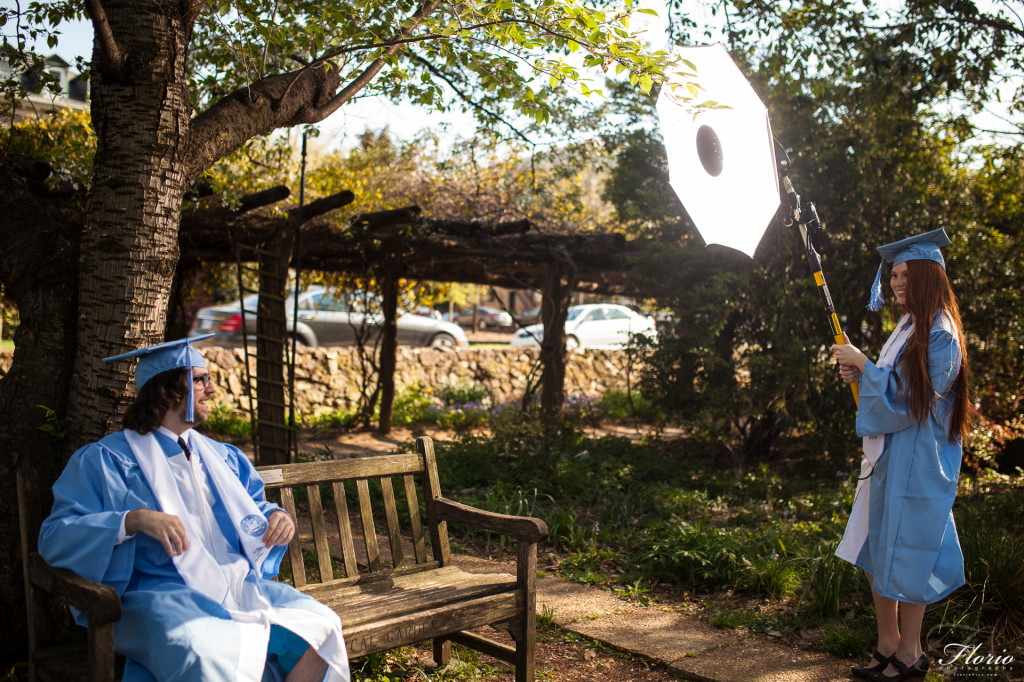For my most recent wedding, I had an interesting problem. This was a destination wedding in Washington, D.C. and I was put up in a hotel not anywhere near the venue. For wedding receptions, I typically light the dance floor with some cross-lit strobes. My go-to setup is 2 Alienbee B1600’s at 1/16th power on C-Stands. I typically just roll the truck up to the venue, unload that gear and setup. For this wedding, however, I was having to plan for not having the truck at the venue, and having to schlep whatever I had back to the hotel via walking and the Metro train system. Certainly, for planning purposes, my typical setup was out.
I had read an article about these Godox V850 / Neewer TT850 units when they were announced, so I did some additional research and ended up buying 2 of the Neewer TT850’s for this reception. I bought these because of the Lithium battery packs and the promise of 600+ shots at full power on a charge. I did end up using these at the wedding and sure enough, they worked great for that setup. I shot them at 1/8 power and many many hundreds of shots throughout the entire reception later I took them down and they both still read 3/3 battery bars. Awesome! I did have one overheat at one point, so that was the only issue. I was during a really rapid fire session where i had a camera going, I had given my lighting assistant a camera and I also lent a pocket wizard to a guest to give them a go and we were all firing like mad.
Anyway, that’s just background on how I ended up with these flashes – it was pretty much just for the Lithium Ion battery and the portability of the units. I did not even realize until later that these units did something equally as awesome – High Speed Sync. You have to have the Cells IIC trigger to do it, but these units will trigger remotely up to the 1/8000s depending on camera model. Once I found this out, I immediately obtained the required triggers and receivers to give it a test.
I ended up doing two different senior portrait / graduation sessions in the span of a week and analyzing those results is the purpose of this post. These two sessions were at about the same time of day, similar subjects, similar or exactly the same locations.
For the first session, I used my go to setup to do outdoor portraits in the direct sun/daylight: The Alienbee ABR800 / 30″ Moon Unit / Vagabond Mini / Triggered with Pocket Wizards. Not the lightest setup, but it could be worse. I had the light mounted in this case on a paint pole and Kacey Pole adapter. This is my typical setup if I have a lighting assistant, or I can mount this to a C-Stand and lug it around. In this case, I had 2 seniors getting shots, so I asked them to take turns being the voice activated light stand.
For the second session 8 days later, I had planned on repeating the exact same setup. I realized, however, that I had forgotten the vagabond mini, having left it on the charger. I did have time to go back and get it, but I decided to try out the new item in my bag of tricks, the Neewer TT850 flashes with the Cells IIC triggers using High Speed Sync. The reason why this is interesting to me, is that I use the other setup with the Alienbee with ND filters on my lens to combat the X-Sync Speed of my Canon 5D mark III. This camera and pretty much all of your other available DSLR bodies have a maximum sync speed of something like 1/200s. I like to use wide aperture lenses at wide apertures and combine that with the strobes. Doing that in bright conditions gives a problem – there’s too much light for the wide aperture I want and the maximum shutter speed of 1/200s. I also use a powerful strobe like the ABR800 because at 1/200s and trying to match (or even beat) the ambient light, you need a good amount of kick. The ABR800 absolutely gives you that. This setup, while not very heavy, is a tad cumbersome. You’ve got the vagabond mini to carry around (which I won’t complain about, try the vagabond II sometime) and a studio strobe which is top heavy.
Long story short, a speed light and a shoot through umbrella is a much more compact and light weight alterative, and I won’t have to do ND filters! At fast shutter speeds to knock dwn the ambient, the theory goes that the flash should be able to start to match the ambient, even just a little speed light. The problem is, doing high speed sync, you lose a lot of the potential power of the speed light. I’m going to compare the results of both setups here. I didn’t shoot these sessions with this article in mind, but once I started looking at the images, it struck me that a little comparison might be possible. Therefore, the images aren’t shot at the exact same conditions and this isn’t a very scientific test.
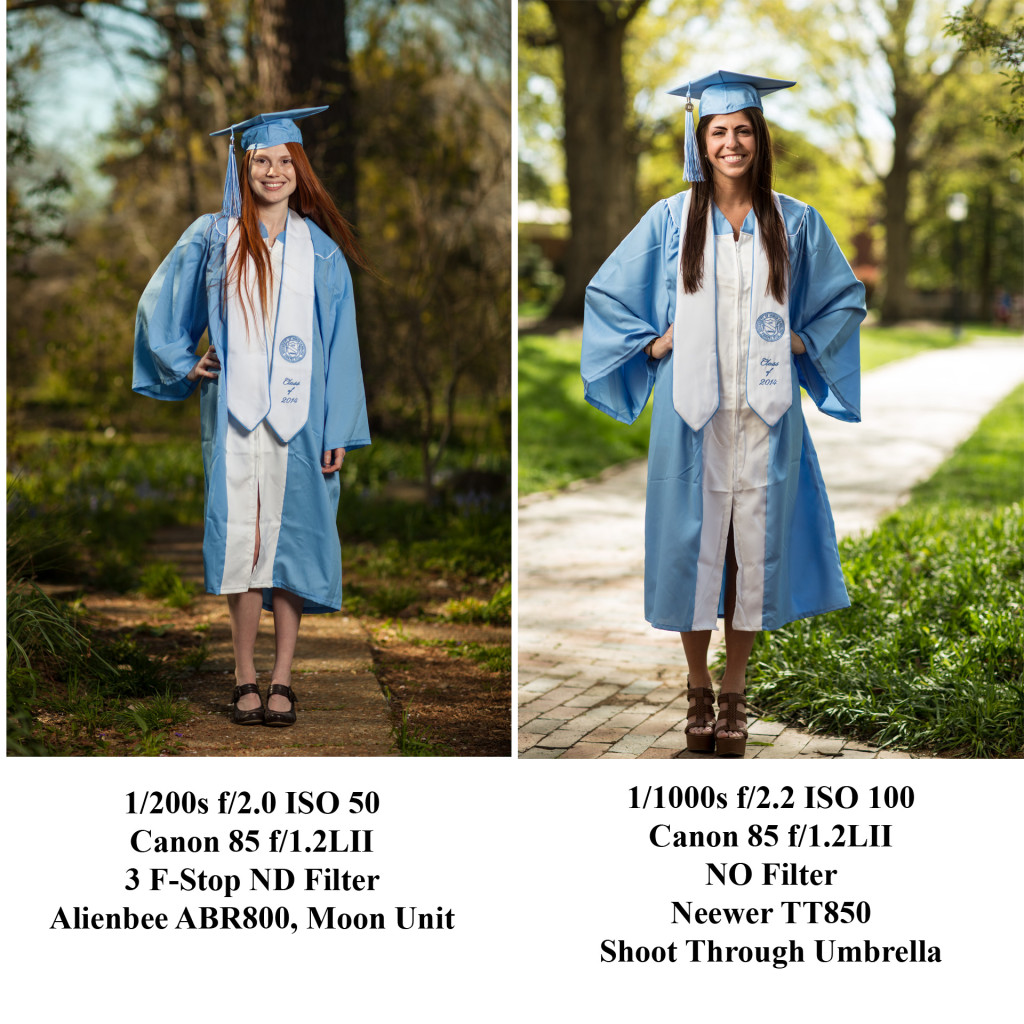 For my first comparison, I’ve got the usual setup on the left, the Alienbee ABR800 with the Moon unit, the lens with a 3 F-Stop filter and the shutter speed at 1/200s. On the right is the new setup, the Neewer TT850 with a shoot through umbrella and no ND filter, a high shutter speed with HSS provided by the Cells-IIC trigger.
For my first comparison, I’ve got the usual setup on the left, the Alienbee ABR800 with the Moon unit, the lens with a 3 F-Stop filter and the shutter speed at 1/200s. On the right is the new setup, the Neewer TT850 with a shoot through umbrella and no ND filter, a high shutter speed with HSS provided by the Cells-IIC trigger.
Things I’ll note, we’ve got a wider coverage of the subject with the ABR800. The ABR800 was positioned about 6 feet away. The Umbrella had to be just out of the frame, something like 3 feet from the subject. The TT850 was at full power the entire day, the ABR800 was moved up and down, typically pretty low like 1/4 power or less. Sorry, I didn’t record the power settings, I wasn’t planning on making this review when I shot the photos.
So, definitely the ABR800 puts out a lot more light. It really lit up my subject on the left. On the right with the TT850, I got the face and upper body well. Overall, I do like the TT850’s image. It probably really helps that the light was closer and that gave some softer light. So, this is definitely not a 1:1 comparison, but had I put the TT850 at the same distance, I would not have gotten good fill.
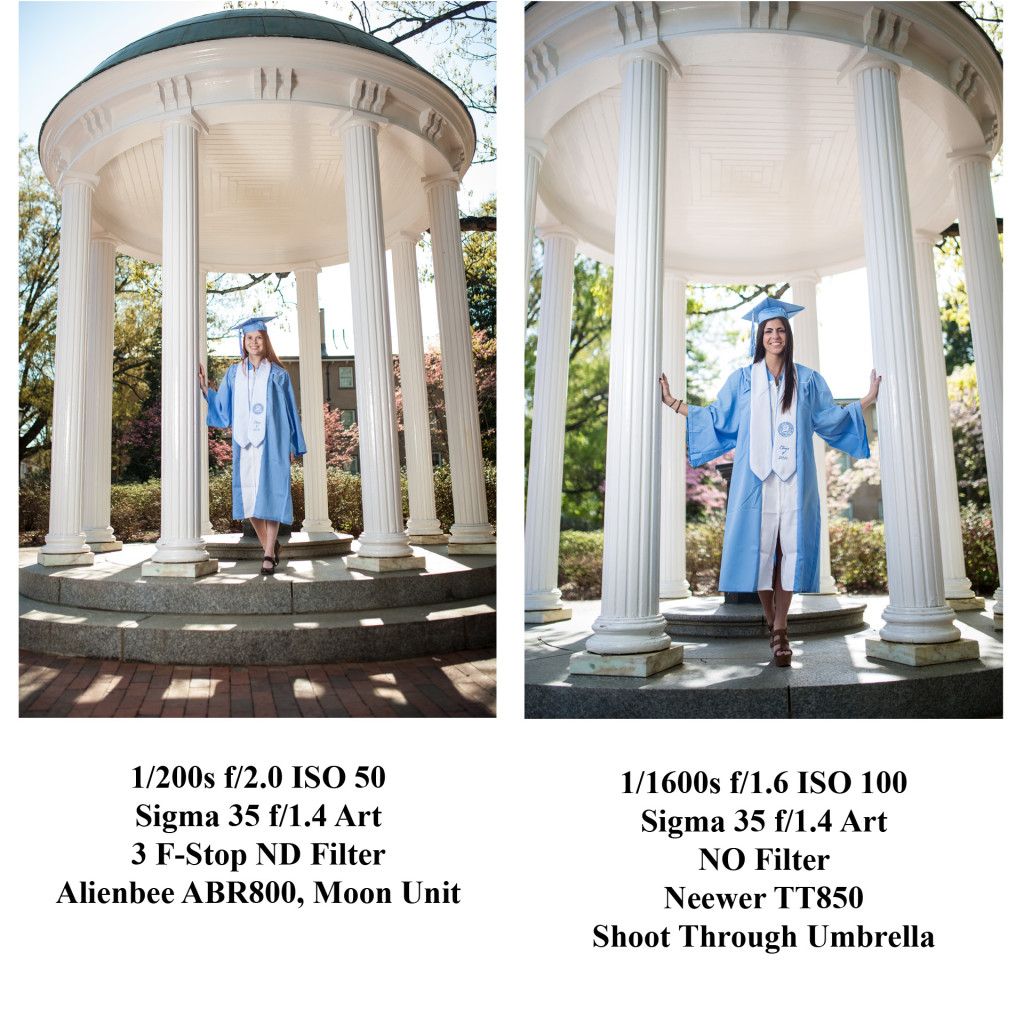 For our second comparison, it’s more of a similar shot. On the left, you can see that more of the body and the legs got light on them, much more even of coverage. Again, the Alienbee setup was several additional feet away from the subject. The TT850 with the umbrella had to be right out of the frame. This also made it so I could not get the entire old well in the shot with the speed light.
For our second comparison, it’s more of a similar shot. On the left, you can see that more of the body and the legs got light on them, much more even of coverage. Again, the Alienbee setup was several additional feet away from the subject. The TT850 with the umbrella had to be right out of the frame. This also made it so I could not get the entire old well in the shot with the speed light.
I do like the results of both shots though. Getting closer to the subject with that wide aperture really threw that background into flowery bokeh heaven.
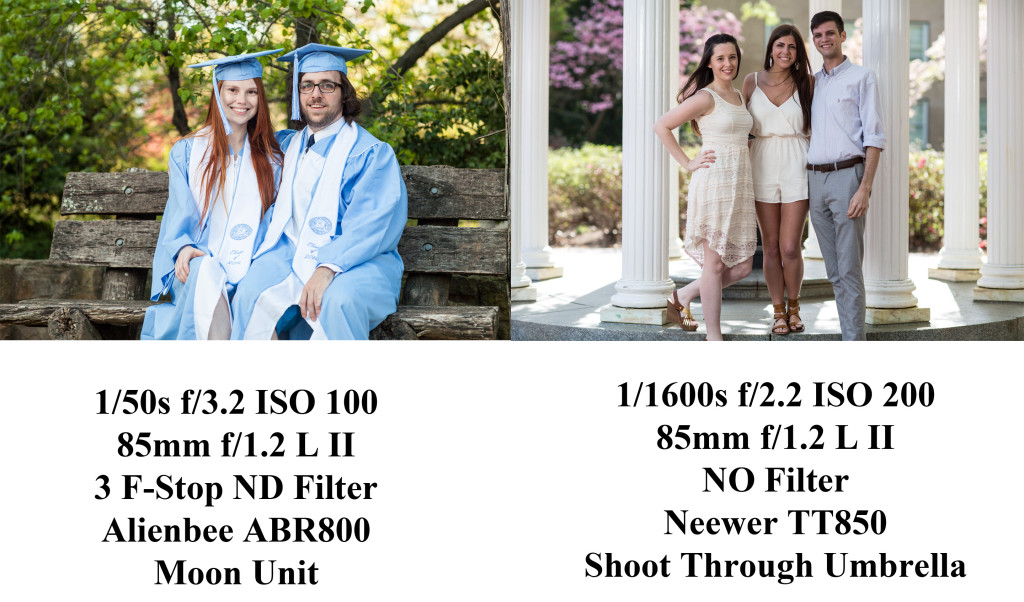 Group shots is where the TT850 setup falls down. I had more than enough light to light my subjects with the ABR800 and not really enough on the TT850. Just not enough oomph.
Group shots is where the TT850 setup falls down. I had more than enough light to light my subjects with the ABR800 and not really enough on the TT850. Just not enough oomph.
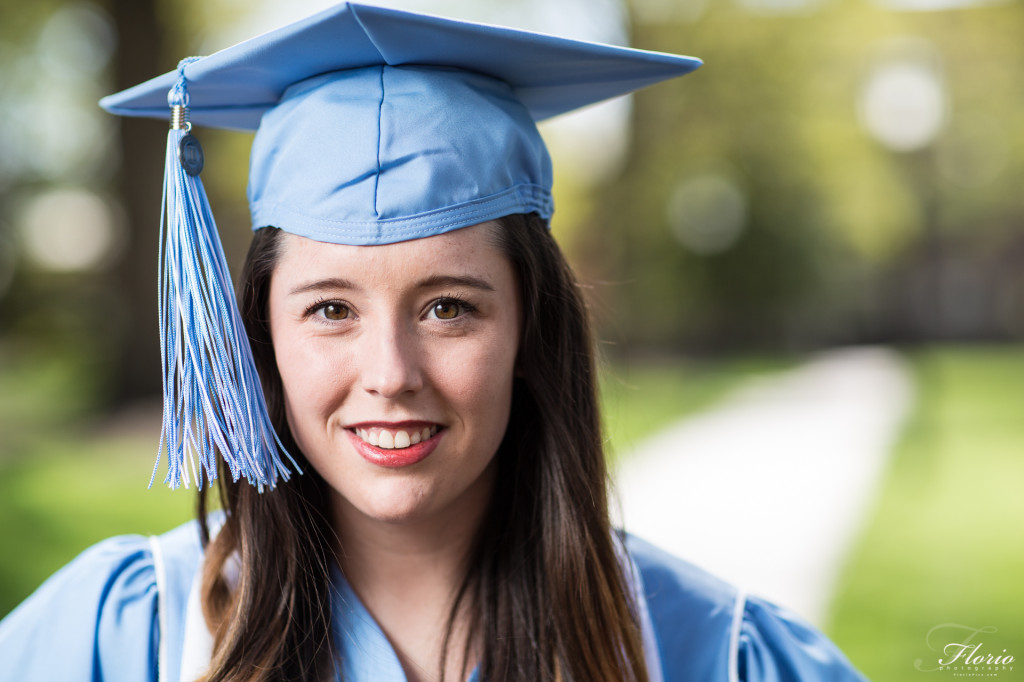 Here’s one with the Neewer TT850 for a head shot. Now this is where this setup works great! ( 1/1000s, f/2.0, ISO 100, 85mm f/1.2 L II, High Speed Sync).
Here’s one with the Neewer TT850 for a head shot. Now this is where this setup works great! ( 1/1000s, f/2.0, ISO 100, 85mm f/1.2 L II, High Speed Sync).
So, what’s my conclusion? If I’m going to go and shoot one subject, and want to travel light and not mess with ND filters and use HSS, the Neewer TT850 with a light modifier like a shoot through umbrella will work great. For groups or even in some instances full body shots, it just wasn’t up to what the other setup with an Alienbee ABR800 and a moon unit with ND filters can do. I’m certainly going to experiment more with the TT850. I’m also highly interested in what the Godox Wistro AD360 can do. That unit is supposed to have a lot more power and can also do the HSS with the same triggers. Either way, for a very compact, light weight setup that can start to compete with the sun in bright daylight, the TT850 and Cells IIC with High Speed Sync is a possible solution.

